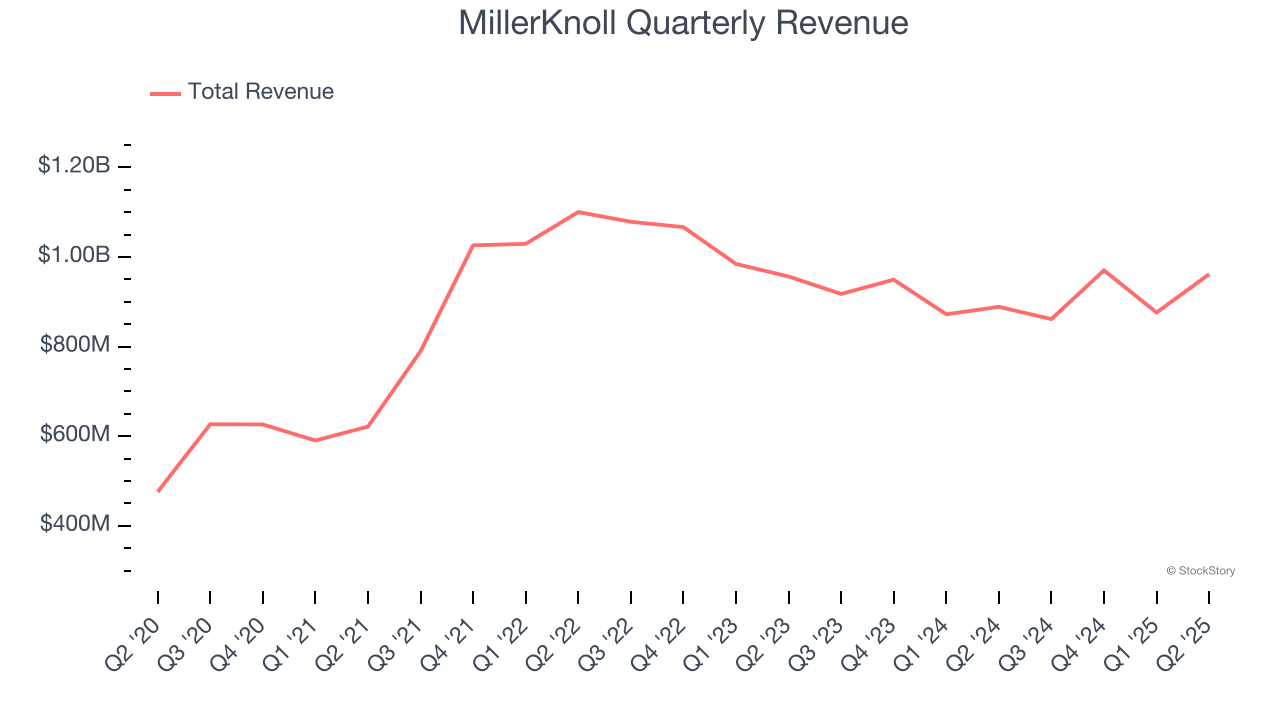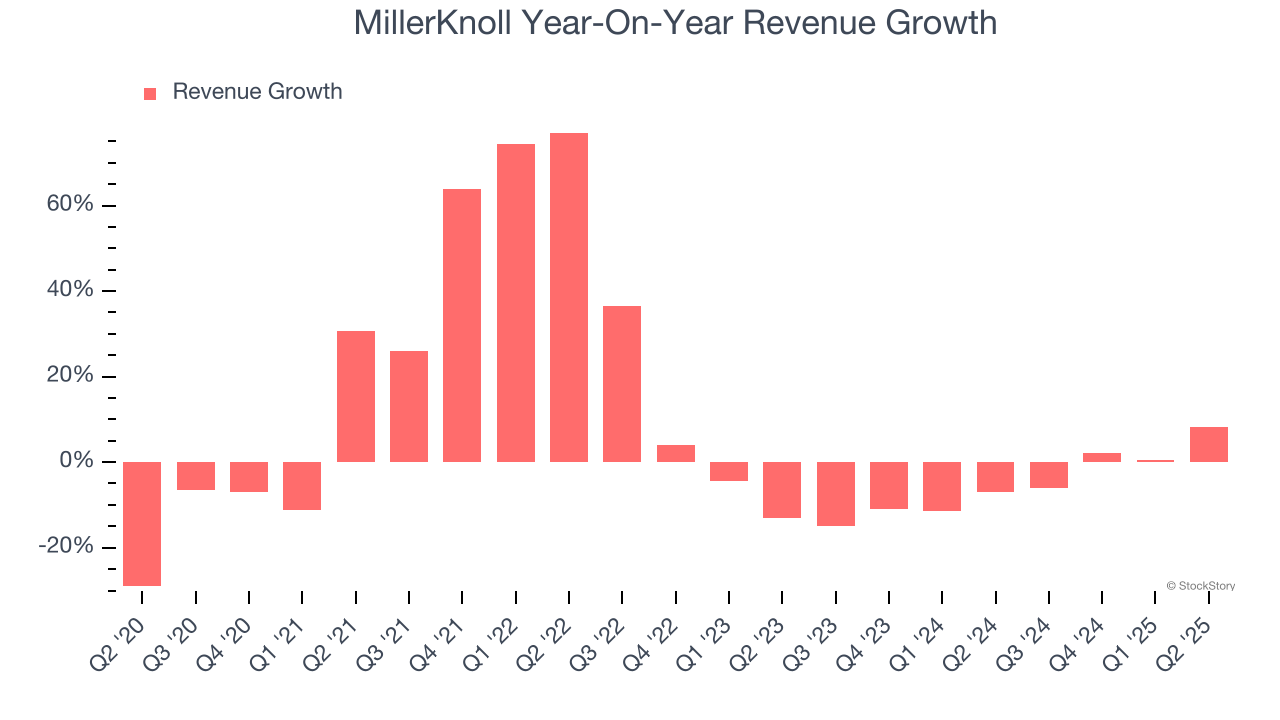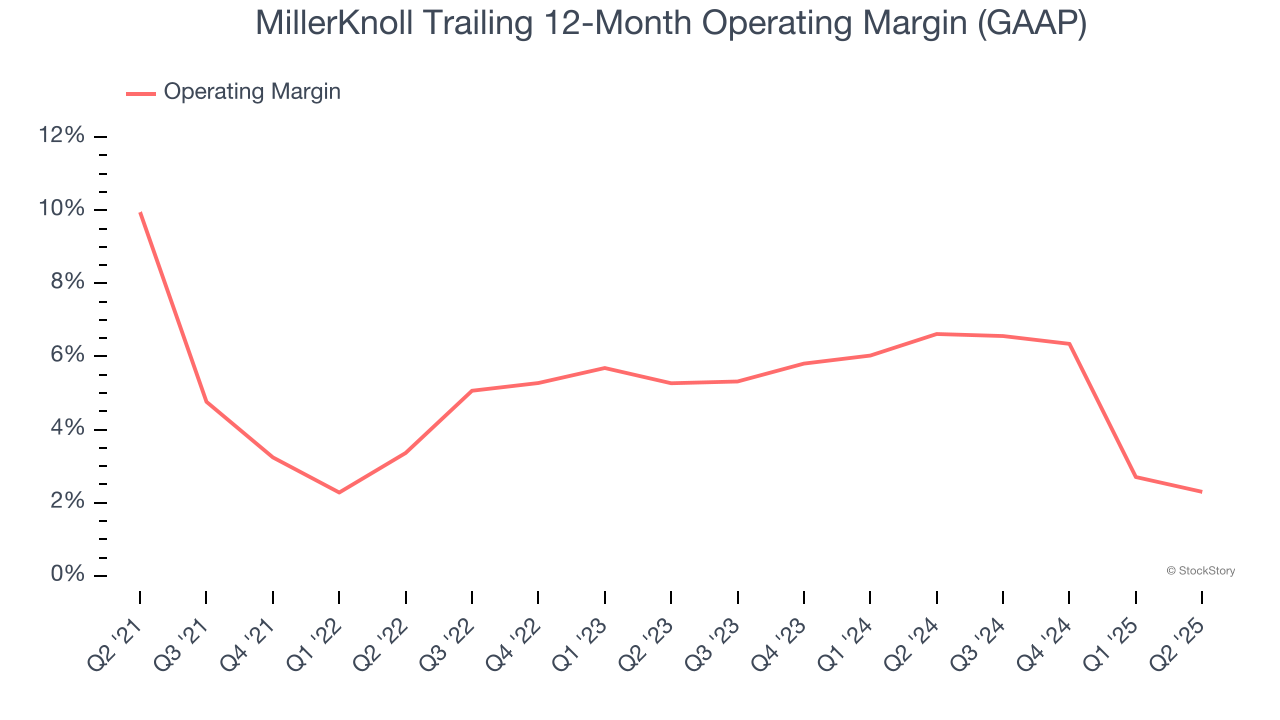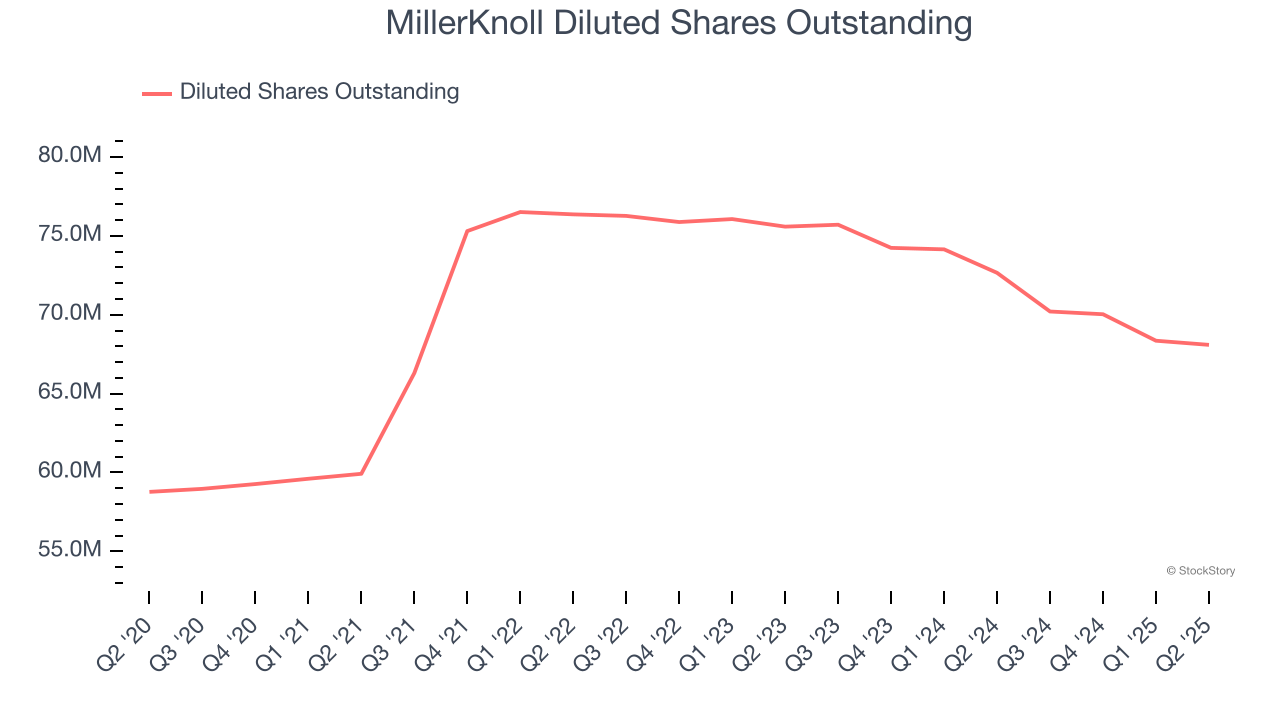
Office furniture manufacturer MillerKnoll (NASDAQ: MLKN) beat Wall Street’s revenue expectations in Q2 CY2025, with sales up 8.2% year on year to $961.8 million. On top of that, next quarter’s revenue guidance ($919 million at the midpoint) was surprisingly good and 3.2% above what analysts were expecting. Its non-GAAP profit of $0.60 per share was 37.4% above analysts’ consensus estimates.
Is now the time to buy MillerKnoll? Find out by accessing our full research report, it’s free.
MillerKnoll (MLKN) Q2 CY2025 Highlights:
- Revenue: $961.8 million vs analyst estimates of $913.8 million (8.2% year-on-year growth, 5.3% beat)
- Adjusted EPS: $0.60 vs analyst estimates of $0.44 (37.4% beat)
- Revenue Guidance for Q3 CY2025 is $919 million at the midpoint, above analyst estimates of $890.7 million
- Adjusted EPS guidance for Q3 CY2025 is $0.35 at the midpoint, above analyst estimates of $0.35
- Operating Margin: 5.7%, down from 7.6% in the same quarter last year
- Backlog: $761.3 million at quarter end
- Market Capitalization: $1.2 billion
Company Overview
Created through the 2021 merger of industry icons Herman Miller and Knoll, MillerKnoll (NASDAQ: MLKN) designs, manufactures, and distributes interior furnishings for offices, healthcare facilities, educational settings, and homes worldwide.
Revenue Growth
A company’s long-term sales performance is one signal of its overall quality. Any business can put up a good quarter or two, but many enduring ones grow for years.
With $3.67 billion in revenue over the past 12 months, MillerKnoll is a mid-sized business services company, which sometimes brings disadvantages compared to larger competitors benefiting from better economies of scale. On the bright side, it can still flex high growth rates because it’s working from a smaller revenue base.
As you can see below, MillerKnoll grew its sales at a solid 8.1% compounded annual growth rate over the last five years. This shows it had high demand, a useful starting point for our analysis.

We at StockStory place the most emphasis on long-term growth, but within business services, a half-decade historical view may miss recent innovations or disruptive industry trends. MillerKnoll’s recent performance marks a sharp pivot from its five-year trend as its revenue has shown annualized declines of 5.2% over the last two years. 
This quarter, MillerKnoll reported year-on-year revenue growth of 8.2%, and its $961.8 million of revenue exceeded Wall Street’s estimates by 5.3%. Company management is currently guiding for a 6.7% year-on-year increase in sales next quarter.
Looking further ahead, sell-side analysts expect revenue to grow 2.1% over the next 12 months. Although this projection suggests its newer products and services will fuel better top-line performance, it is still below average for the sector.
Unless you’ve been living under a rock, it should be obvious by now that generative AI is going to have a huge impact on how large corporations do business. While Nvidia and AMD are trading close to all-time highs, we prefer a lesser-known (but still profitable) stock benefiting from the rise of AI. Click here to access our free report one of our favorites growth stories.
Operating Margin
Operating margin is one of the best measures of profitability because it tells us how much money a company takes home after subtracting all core expenses, like marketing and R&D.
MillerKnoll was profitable over the last five years but held back by its large cost base. Its average operating margin of 5.2% was weak for a business services business.
Analyzing the trend in its profitability, MillerKnoll’s operating margin decreased by 7.7 percentage points over the last five years. This raises questions about the company’s expense base because its revenue growth should have given it leverage on its fixed costs, resulting in better economies of scale and profitability. MillerKnoll’s performance was poor no matter how you look at it - it shows that costs were rising and it couldn’t pass them onto its customers.

In Q2, MillerKnoll generated an operating margin profit margin of 5.7%, down 1.9 percentage points year on year. This reduction is quite minuscule and indicates the company’s overall cost structure has been relatively stable.
Earnings Per Share
We track the long-term change in earnings per share (EPS) for the same reason as long-term revenue growth. Compared to revenue, however, EPS highlights whether a company’s growth is profitable.
Sadly for MillerKnoll, its EPS declined by 5.4% annually over the last five years while its revenue grew by 8.1%. This tells us the company became less profitable on a per-share basis as it expanded.

Diving into the nuances of MillerKnoll’s earnings can give us a better understanding of its performance. As we mentioned earlier, MillerKnoll’s operating margin declined by 7.7 percentage points over the last five years. Its share count also grew by 15.9%, meaning the company not only became less efficient with its operating expenses but also diluted its shareholders. 
In Q2, MillerKnoll reported EPS at $0.60, down from $0.67 in the same quarter last year. Despite falling year on year, this print easily cleared analysts’ estimates. Over the next 12 months, Wall Street expects MillerKnoll’s full-year EPS of $1.95 to stay about the same.
Key Takeaways from MillerKnoll’s Q2 Results
We were impressed by how significantly MillerKnoll blew past analysts’ revenue and EPS expectations this quarter. We were also excited its revenue and EPS guidance for next quarter outperformed Wall Street’s estimates. Zooming out, we think this was a solid print. The stock traded up 9% to $19.24 immediately following the results.
MillerKnoll had an encouraging quarter, but one earnings result doesn’t necessarily make the stock a buy. Let’s see if this is a good investment. If you’re making that decision, you should consider the bigger picture of valuation, business qualities, as well as the latest earnings. We cover that in our actionable full research report which you can read here, it’s free.
